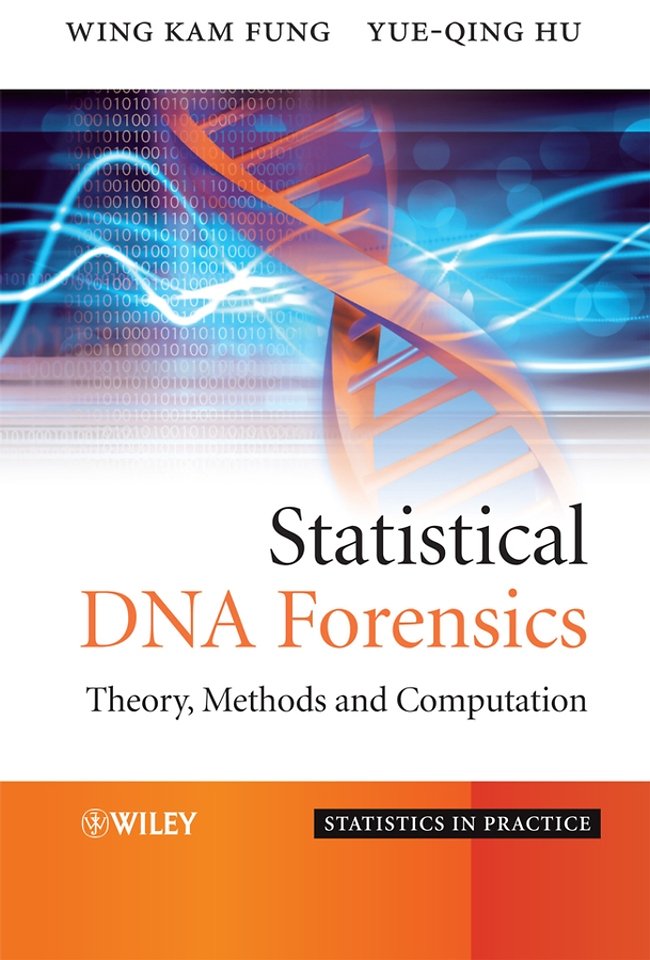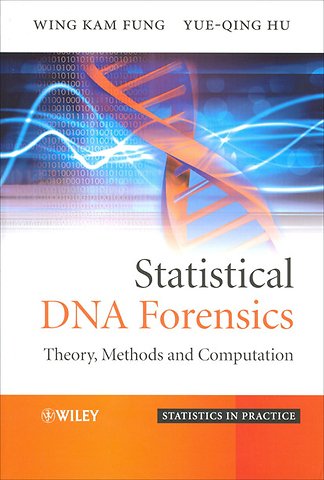Statistical DNA Forensics
Theory, Methods and Computation
Samenvatting
Sinds de introductie van het gebruik van DNA als bewijsmateriaal, zijn statistische methoden steeds belangrijker geworden bij het verzamelen, analyseren en interpreteren van forensische gegevens. De inzet van geavanceerde computertechnologie heeft ervoor gezorgd dat DNA bewijsmateriaal wordt aangewend in steeds complexere processen, en dit heeft geleid tot het gebruik van ingewikkeldere en gespecialiseerde statistische technieken.
Dit boek is een praktisch handboek voor de analyse van DNA bewijsmateriaal. De auteurs geven een overzicht van de noodzakelijke statistische methoden en computertechnieken die hiervoor gebruikt worden. De basisbegrippen in de genetica en statistiek worden gepresenteerd, zodat ook lezers uit andere vakgebieden de complexe forensische zaken leren begrijpen.
Het boek:
- geeft een overzicht van de belangrijkste forensische DNA-toepassingen en illustreert dit met veel praktijkvoorbeelden;
- gaat in op de basistechnieken zoals ouderschapstesten en het omgaan met DNA-sporen van verschillende bronnen;
- geeft in een tabel een samenvatting van de gebruikte formules;
- bespreek het zoeken in een DNA-databank en gaat in op het presenteren en interpreteren van het bewijsmateriaal.
Specificaties
Inhoudsopgave
List of figures
List of tables
1. Introduction
1.1 Statistics, forensic science and the law
1.2 The use of statistics in forensic DNA
1.3 Genetic basis of DNA profiling and typing technology
1.4 About the book
2. Probability and statistics
2.1 Probability
2.2 Dependent events and conditional probability
2.3 Law of total probability
2.4 Bayes' Theorem
2.5 Binomial probability distribution
2.6 Multinomial distribution
2.7 Poisson distribution
2.8 Normal distribution
2.9 Likelihood ratio
2.10 Statistical inference
2.11 Problems
3. Population genetics
3.1 Hardy-Weinberg equilibrium
3.2 Test for Hardy-Weinberg equilibrium
3.3 Other statistics for analysis of a population database
3.4 DNA profiling
3.5 Subpopulation models
3.6 Relatives
3.7 Problems
4. Parentage testing
4.1 Standard trio
4.2 Paternity computer software
4.3 A relative of the alleged father is the true father
4.4 Alleged father unavailable but his relative is
4.5 Motherless case
4.6 Motherless case: relatives involved
4.7 Determination of both parents
4.8 Probability of excluding a random man from paternity
4.9 Power of exclusion
4.10 Other issues
4.11 Problems
5. Testing for kinship
5.1 Kinship testing of any two persons: HWE
5.2 Computer software
5.3 Kinship testing of two persons: subdivided populations
5.4 Examples with software
5.5 Three persons situation: HWE
5.6 Computer software and example
5.7 Three persons situation: subdivided populations
5.8 Complex kinship determinations: method and software
5.9 Problems
6. Interpreting mixtures
6.1 An illustrative example
6.2 Some common cases and a case example
6.3 A general approach
6.4 Population in Hardy-Weinberg equilibrium
6.5 Population with multiple ethnic groups
6.6 Subdivided population
6.7 Computer software and example
6.8 NRC II Recommendation 4.1
6.9 Proofs
6.10 Problems
7. Interpreting mixtures in the presence of relatives
7.1 One pair of relatives: HWE
7.2 Two pairs of relatives: HWE
7.3 Related people from the same subdivided population
7.4 Proofs
7.5 Problems
8. Other issues
8.1 Lineage markers
8.2 Haplotypic genetic markers for mixture
8.3 Bayesian network
8.4 Peak information
8.5 Mass disaster
8.6 Database search
Solutions to Problems
Appendix A: The standard normal distribution
Appendix B: Upper 1% and 5% points of w2 distributions
Bibliography
Index.
Anderen die dit boek kochten, kochten ook
Net verschenen
Rubrieken
- aanbestedingsrecht
- aansprakelijkheids- en verzekeringsrecht
- accountancy
- algemeen juridisch
- arbeidsrecht
- bank- en effectenrecht
- bestuursrecht
- bouwrecht
- burgerlijk recht en procesrecht
- europees-internationaal recht
- fiscaal recht
- gezondheidsrecht
- insolventierecht
- intellectuele eigendom en ict-recht
- management
- mens en maatschappij
- milieu- en omgevingsrecht
- notarieel recht
- ondernemingsrecht
- pensioenrecht
- personen- en familierecht
- sociale zekerheidsrecht
- staatsrecht
- strafrecht en criminologie
- vastgoed- en huurrecht
- vreemdelingenrecht







